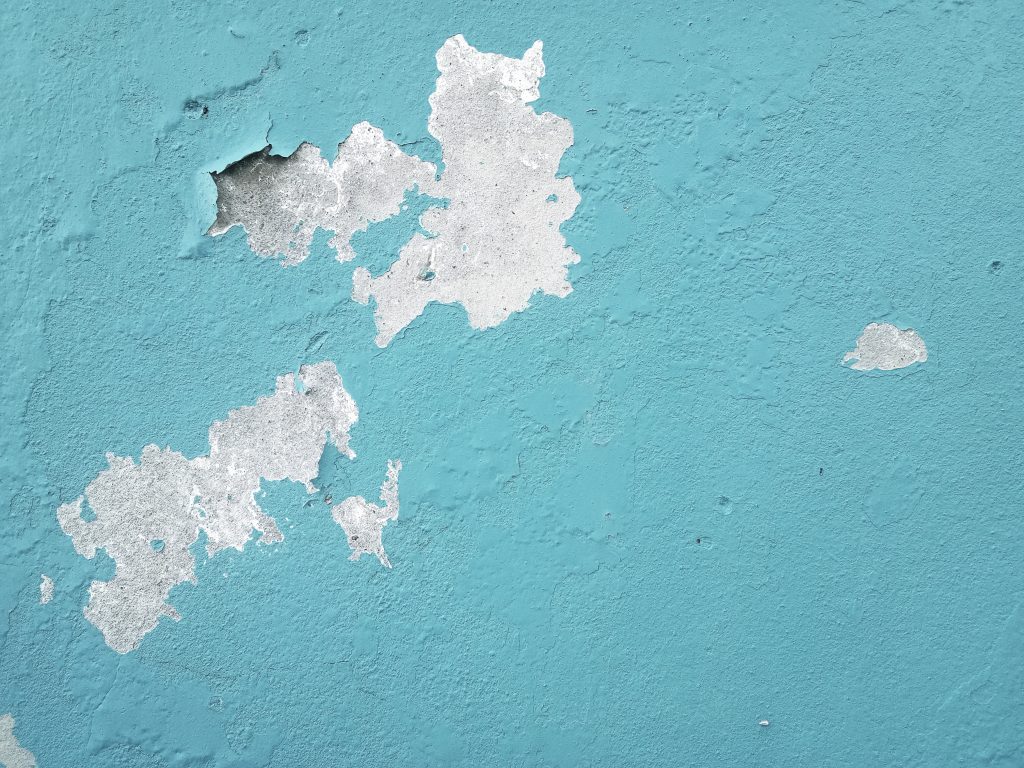What is Paint Bubbling? Meaning, Causes and Prevention

Exterior paint deteriorates on old cement floor. The concrete wall is dirty with peeling paint for graphic design or wallpaper. Vintage background in retro concept.
Seeing your once-smooth walls covered in unsightly bubbles and blisters can be frustrating. This issue is commonly known as paint bubbling. It occurs when the paint separates from the surface, creating air pockets that bulge or bubble out. But what causes this issue in the first place? In this blog, we will explore the most common causes of paint bubbling and provide some tips on how to prevent and fix it. So, let’s get started!
What is Paint Bubbling?
Paint bubbling occurs when pockets or blisters form beneath the surface of paint, causing it to lift and create a bubbled appearance. This phenomenon is commonly observed on painted surfaces, such as walls, ceilings and automobiles. The root cause of paint bubbling can vary, but it typically occurs due to moisture infiltration, poor surface preparation or incompatible paint layers.
Causes Of Paint Bubbling on Walls
Paint bubbling on walls can be attributed to several key reasons, each of which contributes to the formation of blisters beneath the paint surface:
Moisture Infiltration
Moisture infiltration happens when water vapour or liquid moisture penetrates the wall substrate. Here, moisture gets trapped beneath the paint layers which leads to blister formation.
Poor Surface Preparation
Inadequate surface preparation before painting is another common cause of paint bubbling. Failure to clean, repair and prime the wall surface properly can result in poor adhesion between the paint and the substrate.
Excessive Humidity
High humidity levels in the surrounding environment can intensify paint-bubbling issues. Moisture-laden air can interact with the paint as it dries, causing it to bubble and blister.
Application in Unfavorable Conditions
Painting under unfavorable conditions, such as extreme temperatures or direct sunlight can lead to paint drying too quickly or unevenly. This can trap solvents or moisture beneath the surface, contributing to blister formation.
Using Low-Quality Paint Products
Using cheap and low-quality paint products or applying new layers of paint over old layers can result in adhesion problems and paint bubbling.
Substrate Movement
Structural movement in the wall substrate can cause stress on the paint layer. Reasons such as expansion and contraction due to temperature fluctuations or settling of the building. This stress can lead to the formation of blisters as the paint struggles to maintain adhesion.
Get finely painted walls with the expert assistance of JK Cement BuildXpert. Contact us today!
Some Tips to Avoid Paint Blistering on Wall and How to Fix It
To avoid paint blistering on walls and effectively address existing issues, consider the following tips and methods:
Prevention Tips
Proper Surface Preparation
Thoroughly clean and dry the wall surface before painting to remove dirt, grease and contaminants that can hinder paint adhesion.
Repair Damaged Areas
Address any cracks, holes or imperfections in the wall substrate before painting to prevent moisture infiltration and promote a smooth painting surface.
Use High-Quality Paints
Invest in high-quality paints and primers that are compatible with the wall substrate and each other to ensure proper adhesion and durability.
Apply Paint in Optimal Conditions
Paint in moderate temperatures and humidity levels. Avoid painting in direct sunlight or during rainy weather to minimize the risk of moisture-related issues.
Ensure Sufficient Ventilation
Provide adequate ventilation in the painted area to facilitate proper drying of the paint and prevent moisture buildup.
Fixing Paint Bubbling
1. Identify the Cause
Determine the underlying cause of the paint blistering. For instance, moisture infiltration or poor surface preparation, to address the root issue effectively.
2. Remove Blisters
Carefully scrape away the blistered paint using a putty knife or scraper until you reach a smooth, intact surface.
3. Sand the Area
Lightly sand the affected area to smooth out any rough edges and promote better adhesion of the new paint.
4. Prime the Surface
Apply a primer to the repaired area to seal the surface and improve the adhesion of the new paint layers.
5. Repaint the Wall
Once the primer has dried, repaint the wall using high-quality paint, ensuring proper coverage and even application to achieve a seamless finish.
Wrapping It Up
Paint bubbling on walls can be frustrating. However, by knowing the potential causes and prevention methods, you can effectively tackle it. Remember, prevention is key, but if paint bubbling on the ceiling and walls does occur, do not panic. Simply follow the steps outlined to restore your walls.
Discover the range of water-resistant cement from JK Cement, your trusted construction company in India.
FAQs
Does bubbling paint mean a leak?
No, not necessarily. Bubbling paint can indicate various issues such as moisture infiltration, poor surface preparation or incompatible paint layers.
What is it called when paint bubbles?
When paint bubbles, it is commonly referred to as paint bubbling or blistering.
What is blistering in paint?
Blistering in paint refers to the formation of bubbles or blisters beneath the paint surface. It is typically caused by moisture infiltration, poor surface preparation or other factors that can cause damage to painted walls.
How do you remove bubbles from paint?
To remove bubbles from the paint, carefully scrape away the affected areas, sand the surface to smooth it out, apply a primer to seal the surface, and repaint using high-quality paint.
Will the primer stop the bubbling of paint?
Primer can help prevent paint bubbling on ceiling and walls by sealing the surface and promoting better adhesion of the paint layers. It works best when applied to properly prepared surfaces.